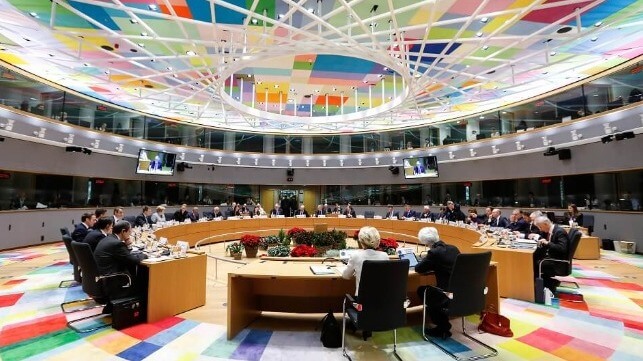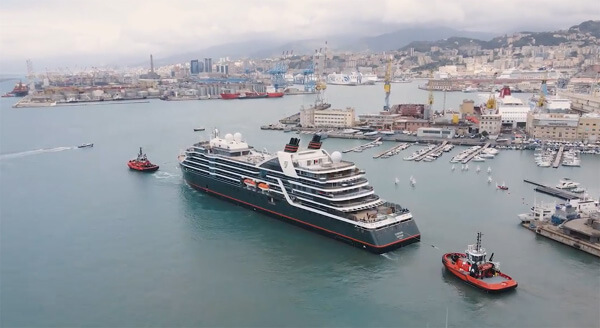The history of the International Telecommunication Union (ITU), the United Nations agency for information and communication technologies (ICTs), is inextricably linked with that of maritime radiocommunications.
The theme of this year’s Day of the Seafarer, “Your voyage – then and now, share your journey”, inspired me to look back at ITU’s longstanding history of developing standards and regulations for maritime communications services and technologies, which are essential for ensuring safety and security at sea.
Maritime safety milestones
ITU’s “maritime voyage” began in the early 1900s. In 1906, the first International Radiotelegraph Conference established “SOS” in Morse code as the international maritime distress signal.
That same year, the maritime service regulations, annexed to the proceedings of the International Radiotelegraph Conference held in Berlin, instructed the International Radiotelegraphic Bureau to establish a list of radiotelegraphy stations, including coast stations and ship stations.
Then, in 1909, came the publication of the first volumes dedicated to maritime radiocommunications: the Official List of Radiotelegraph Stations, and Coast stations and ship stations.
In 1912, in response to the sinking of the Titanic, the International Radiotelegraph Conference agreed on a common frequency for ships’ radio distress signals. The conference also established regulations for ship radio operators to keep watch for distress calls – another major step forward for seafarer safety.
In 1927, the International Radiotelegraph Conference held in Washington, DC introduced the first provisions related to maritime publications into the Radio Regulations – the global treaty maintained by ITU to govern the use of radio frequencies globally. Shortly after, ITU began publishing its List of Ship Stations and List of Callsigns, also known as “List V.”
The publication now known as the List of Ship Stations and Maritime Mobile Service Identity Assignments contains crucial contact information and other administrative and operational data on over 900,000 shipborne radio stations around the world.
Today, List V remains the go-to maritime resource recognized by all 193 ITU Member States. Issued annually, it is widely used for day-to-day vessel operations, including ship-to-shore and ship-to-ship communications.
In 1967, the World Administrative Radio Conference adopted a resolution establishing a manual on mobile services and operations on the high seas. The first edition of the Manual for Use by the Maritime Mobile and Maritime Mobile-Satellite Services – commonly known as “the Maritime Manual” – was published in December 1968.
Volume 1 provides a comprehensive overview of maritime radio technologies, describes the Global Maritime Distress and Safety System (GMDSS) and other maritime operational procedures. In Volume 2, readers will find regulatory, technical, and operational texts related to maritime communications.
Modern maritime safety
Today, seafarers depend on terrestrial and satellite communications to carry out their responsibilities safely and effectively. These systems form the basis of the GMDSS which was jointly developed by the International Maritime Organization (IMO) and ITU. The GMDSS enables seafarers in distress to quickly alert search and rescue authorities ashore and nearby vessels, who can then co-ordinate assistance.
At successive World Radiocommunication Conferences, ITU Member States have taken important decisions to enhance safety at sea by improving the efficacy of spectrum use for maritime communication.
At WRC-07, for instance, Member States decided to consolidate and update some of the maritime service publications to ensure their quality and accuracy, keeping pace with evolving maritime technologies and enhanced safety protocols. Administrations are also obliged to notify ITU of any changes to their information contained in the publications on a regular basis.
The ship station and callsign lists were consolidated into a single List V publication, the first edition of which was issued in March 2011. Additionally, the List of Coast Stations and Special Service Stations, commonly known as List IV, isissued biannually. List IV and List V contain information that aims to help Seafarers worldwide to carry out general and emergency radiocommunications.
More recently, WRC-19 allocated additional spectrum to the GMDSS, allowing expanded coverage and enhanced technical capabilities. Among these was the addition of a non-geostationary satellite system, which significantly improves satellite distress and safety communications for seafarers in polar regions.
ITU also maintains the Maritime Mobile Access and Retrieval System (MARS), which is updated daily. MARS, created in 1994, includes information on more than 900,000 vessels and over 2,000 coast stations. Search and rescue authorities worldwide rely on the MARS database to resolve seaborne distress and safety alerts.
Thanks to these publications, seafarers can sail confidently knowing they have all the necessary guidance to correctly apply relevant radiocommunication procedures. Many of these are mandatory and must be followed to the letter – especially in distress situations.
Updates expected after WRC-23
The Maritime Manual is updated after the release of each new edition of the Radio Regulations, which happens after each World Radiocommunication Conference (WRC). The manual contains the most up to date information on new maritime radiocommunication, including the latest technological developments.
The upcoming WRC-23 will consider possible regulatory actions to support the further modernization of the Global Maritime Distress and Safety System (GMDSS) and the implementation of e-navigation. Those WRC-23 updates to the Radio Regulations will be reflected in the subsequent edition of the Maritime Manual.
As we celebrate this year’s Day of the Seafarer, ITU pays tribute to all seafarers. On behalf of our radiocommunication team, I wish to reaffirm ITU’s long-standing commitment to keeping seafarers safe and connected.
Source: https://www.itu.int/hub/2022/06/seafarer-day-itu-maritime-publications/







